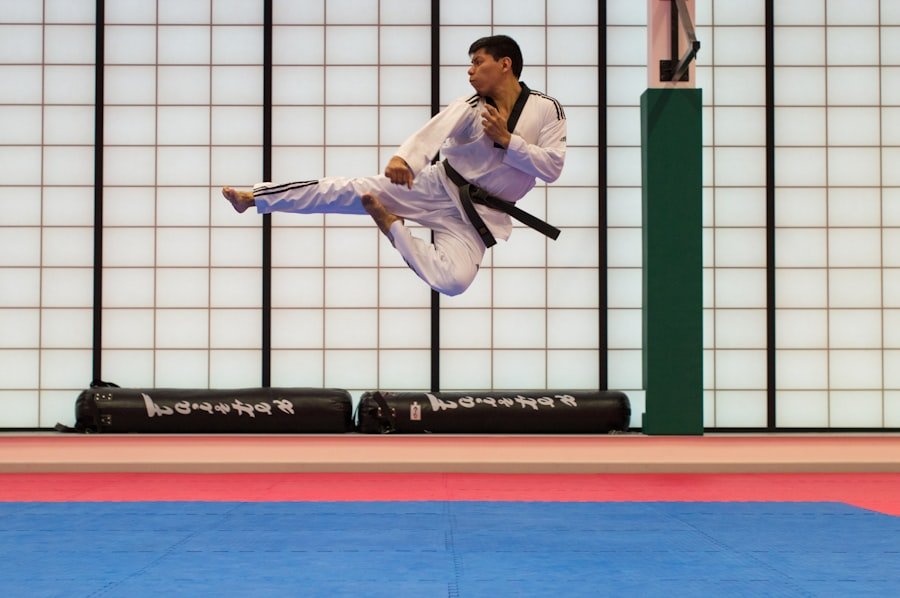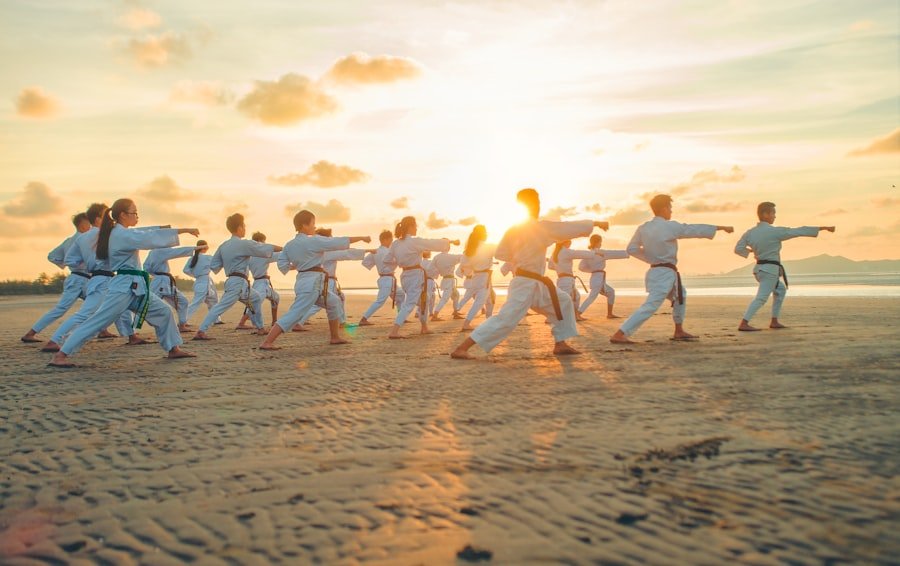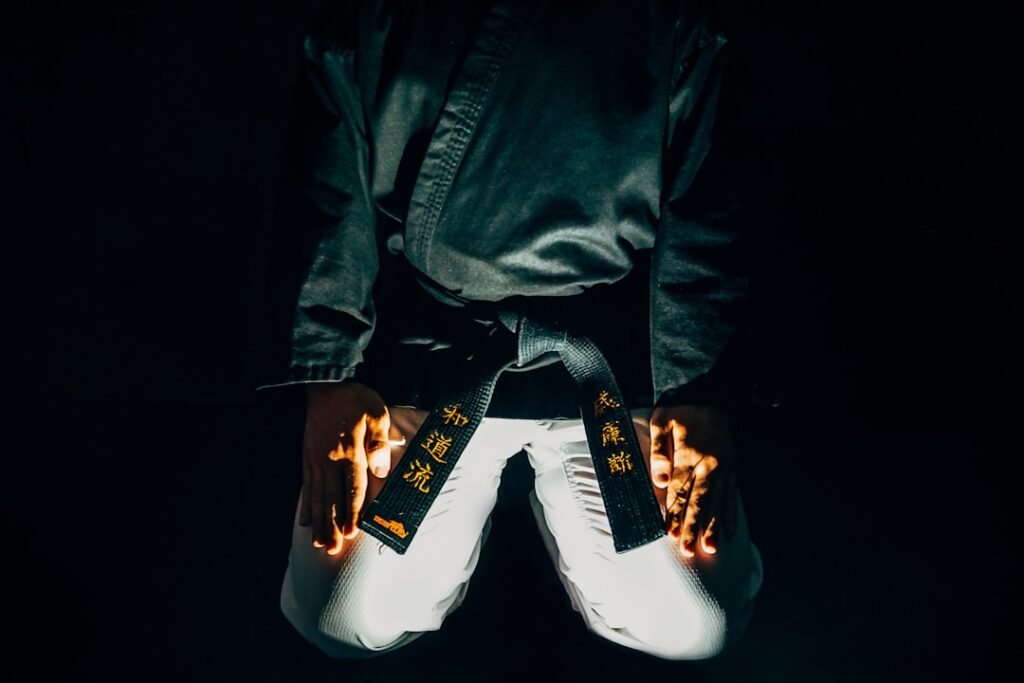Martial arts, a discipline steeped in history and tradition, encompasses a vast array of techniques, philosophies, and practices. At the heart of this intricate world lies a rich vocabulary that serves as the foundation for understanding and mastering various martial arts forms. Terminology in martial arts is not merely a collection of words; it is a vital component that conveys the essence of techniques, strategies, and the cultural heritage of the martial arts community.
From the Japanese “dojo” to the Chinese “kung fu,” each term carries with it a wealth of meaning and significance that transcends mere translation. As practitioners delve deeper into their chosen martial art, they quickly realise that mastering the terminology is as crucial as perfecting physical techniques. The language of martial arts provides a framework for communication among practitioners, instructors, and enthusiasts alike.
It fosters a sense of belonging and identity within the martial arts community, allowing individuals to connect with one another through shared understanding. In this article, we will explore the importance of martial arts terminology, its evolution, and its role in preserving tradition and culture, particularly in the vibrant martial arts scene in Oslo. Spaces are filling up fast! Register for Chinese classes at the LC Chinese School in Oslo today.
Table of Contents
ToggleSummary
- Understanding martial arts terminology is essential for practitioners to communicate effectively and respect the tradition.
- Pronunciation of martial arts terms is crucial for conveying respect and understanding within the community.
- Incorporating martial arts terminology into training helps to reinforce the cultural and traditional aspects of the practice.
- Memorising martial arts terminology can be facilitated through consistent practice and association with movements.
- Embracing and honouring martial arts terminology is key to preserving the tradition and culture within the Oslo martial arts community.
Understanding the Importance of Terminology in Martial Arts
The significance of terminology in martial arts cannot be overstated. It serves as a bridge between the physical practice and the philosophical underpinnings of each discipline. Understanding the terms used in martial arts allows practitioners to grasp the nuances of techniques and strategies, enhancing their overall training experience.
For instance, knowing the difference between “kiai” (a spirited shout) and “kuzushi” (the concept of unbalancing an opponent) can profoundly impact a student’s approach to sparring or self-defence. Moreover, terminology plays a crucial role in ensuring safety during training sessions. Clear communication is essential when executing complex techniques or engaging in sparring.
Misunderstandings arising from ambiguous language can lead to accidents or injuries. Therefore, a solid grasp of martial arts terminology not only enriches one’s practice but also promotes a safer training environment for all participants.
Common Martial Arts Terms and Their Meanings

A plethora of terms populate the lexicon of martial arts, each with its own unique meaning and application. Some of the most common terms include “kata,” which refers to a pre-arranged sequence of movements designed to teach specific techniques and principles; “bunkai,” which is the application of kata in real-life scenarios; and “randori,” a term used to describe a form of sparring where a practitioner defends against multiple attackers. In addition to these foundational terms, there are also specific phrases that denote various stances, strikes, and defensive techniques.
For example, “front kick” (mae geri in Japanese) is a fundamental striking technique that involves delivering a kick with the front foot, while “guard” refers to a defensive position that protects against incoming attacks. Familiarity with these terms not only aids in comprehension but also enhances communication between instructors and students during training sessions.
The Importance of Pronunciation in Martial Arts Terminology
While understanding the meaning of martial arts terms is essential, correct pronunciation is equally important. Many martial arts terms originate from languages such as Japanese, Chinese, or Korean, each with its own phonetic nuances. Mispronouncing these terms can lead to confusion or misinterpretation of techniques.
For instance, saying “jiu-jitsu” incorrectly may not only alter its meaning but could also disrupt the flow of communication during training. Furthermore, proper pronunciation fosters respect for the culture from which these martial arts originate. It demonstrates an appreciation for the traditions and philosophies that underpin each discipline.
Instructors often emphasise the importance of pronunciation during classes, encouraging students to practice not only the physical aspects of their training but also the linguistic elements that accompany them.
How to Incorporate Martial Arts Terminology into Training
Incorporating martial arts terminology into training can significantly enhance a practitioner’s learning experience. One effective method is to use terminology consistently during classes. Instructors can introduce new terms alongside their corresponding techniques, allowing students to associate language with movement.
For example, when teaching a new kick, an instructor might explain its name and purpose before demonstrating it. Additionally, students can benefit from creating flashcards or visual aids that display key terms alongside images or diagrams illustrating their application. This approach reinforces memory retention and provides a tangible reference for practitioners to consult during their training sessions.
Engaging with terminology in various ways—through verbal repetition, written exercises, or practical application—can deepen understanding and facilitate mastery.
The Role of Terminology in Maintaining Tradition and Culture

Martial arts are deeply rooted in cultural traditions that span centuries. The terminology associated with these practices serves as a vessel for preserving this heritage. Each term encapsulates historical significance and philosophical concepts that have been passed down through generations.
By learning and using these terms, practitioners actively participate in the continuation of their chosen martial art’s legacy. In Oslo, where diverse martial arts styles flourish, terminology plays a pivotal role in connecting practitioners with their respective traditions. Whether it is through traditional Japanese judo or Chinese tai chi, understanding the language associated with these disciplines fosters respect for their origins.
This connection to culture not only enriches individual practice but also strengthens the broader martial arts community within the city.
Tips for Memorising Martial Arts Terminology
Memorising martial arts terminology can be challenging due to the sheer volume of terms and their varied meanings. However, several strategies can aid practitioners in this endeavour. One effective technique is to group related terms together based on their themes or applications.
For instance, categorising terms related to striking techniques separately from those associated with grappling can create mental associations that facilitate recall. Another useful method is to engage in regular review sessions where practitioners recite terms aloud or quiz one another on their meanings. This interactive approach not only reinforces memory but also encourages camaraderie among students as they learn together.
Additionally, incorporating terminology into daily conversations about training can help solidify understanding and make learning more enjoyable.
The Evolution of Martial Arts Terminology in Oslo
As martial arts continue to evolve globally, so too does their terminology. In Oslo, the influx of diverse martial arts styles has led to an interesting blend of languages and terminologies. Practitioners often find themselves navigating between traditional terms from their respective disciplines and contemporary adaptations that reflect modern training methods.
This evolution presents both challenges and opportunities for practitioners in Oslo. While it may lead to confusion regarding terminology consistency, it also fosters innovation and creativity within the martial arts community. As instructors adapt traditional techniques to suit contemporary needs, new terms may emerge that reflect these changes while still honouring their roots.
The Significance of Terminology in Martial Arts Competitions
In competitive settings, precise terminology becomes even more critical. Competitions often require participants to demonstrate specific techniques or adhere to particular rules that are articulated through established terminology. Judges and referees rely on this language to assess performances accurately and fairly.
Moreover, competitors who are well-versed in martial arts terminology can communicate effectively with coaches and teammates during competitions. This ability to articulate strategies or adjustments in real-time can significantly impact performance outcomes. Therefore, mastering terminology not only enhances individual practice but also contributes to success in competitive environments.
Resources for Learning and Understanding Martial Arts Terminology
For those seeking to deepen their understanding of martial arts terminology, numerous resources are available. Books dedicated to specific martial arts styles often include glossaries that define key terms and concepts. Online platforms also offer instructional videos that demonstrate techniques alongside their corresponding terminology.
Additionally, local martial arts schools in Oslo frequently provide workshops or seminars focused on terminology and its application within training contexts. Engaging with instructors who emphasise language alongside technique can further enrich one’s learning experience.
Embracing and Honouring Martial Arts Terminology in Oslo
In conclusion, embracing and honouring martial arts terminology is essential for practitioners in Oslo and beyond. The language associated with these disciplines serves as a vital link between physical practice and cultural heritage, fostering understanding and connection within the martial arts community. By prioritising the learning of terminology—through consistent practice, pronunciation efforts, and engagement with resources—students can enhance their training experiences while contributing to the preservation of tradition.
As Oslo continues to be a melting pot for various martial arts styles, practitioners have a unique opportunity to explore diverse terminologies while honouring their roots. The journey towards mastering martial arts is not solely about physical prowess; it is also about cultivating respect for the language that encapsulates its essence. By doing so, practitioners not only enrich their own experiences but also contribute to the vibrant tapestry of martial arts culture within this dynamic city.







